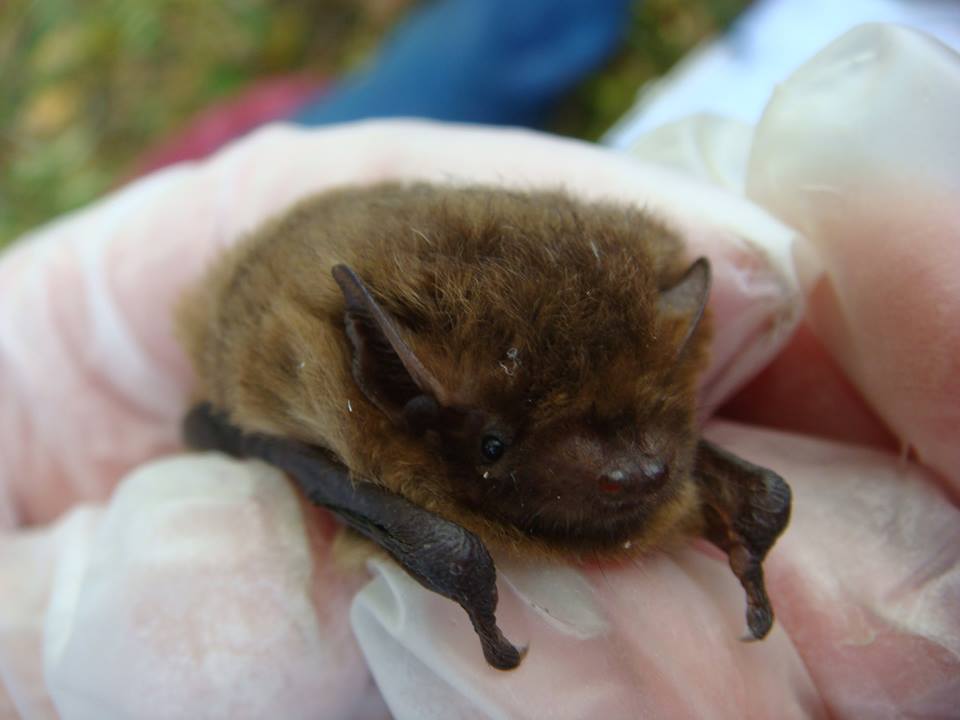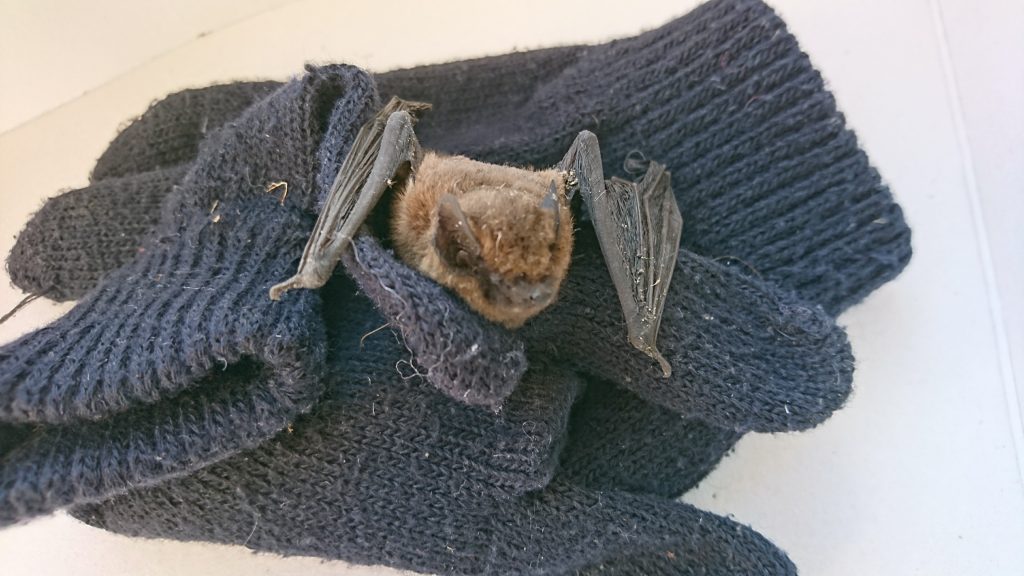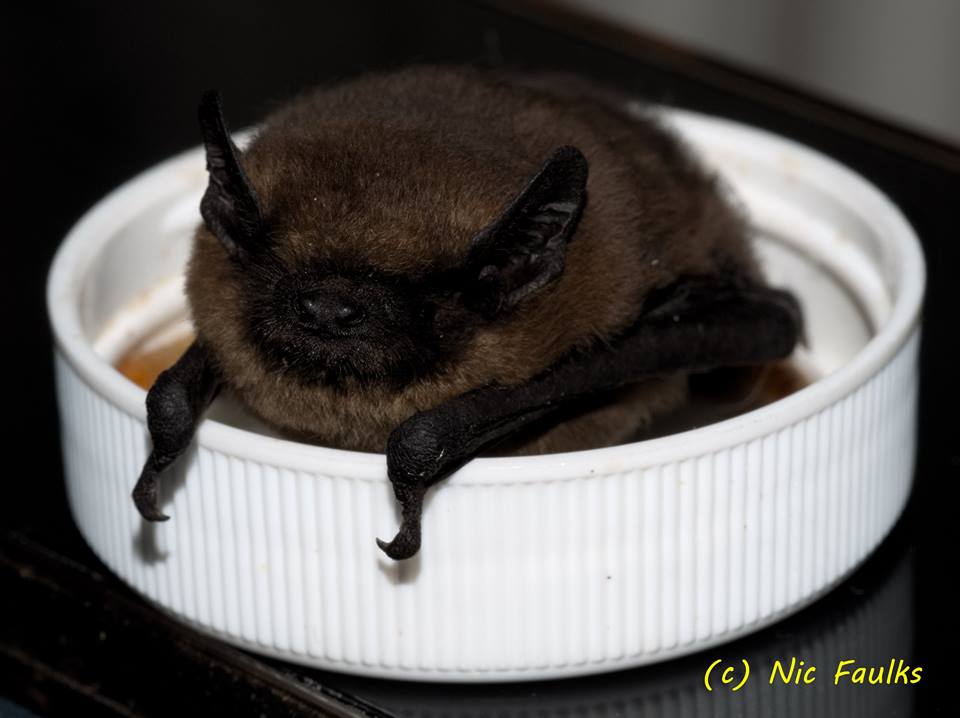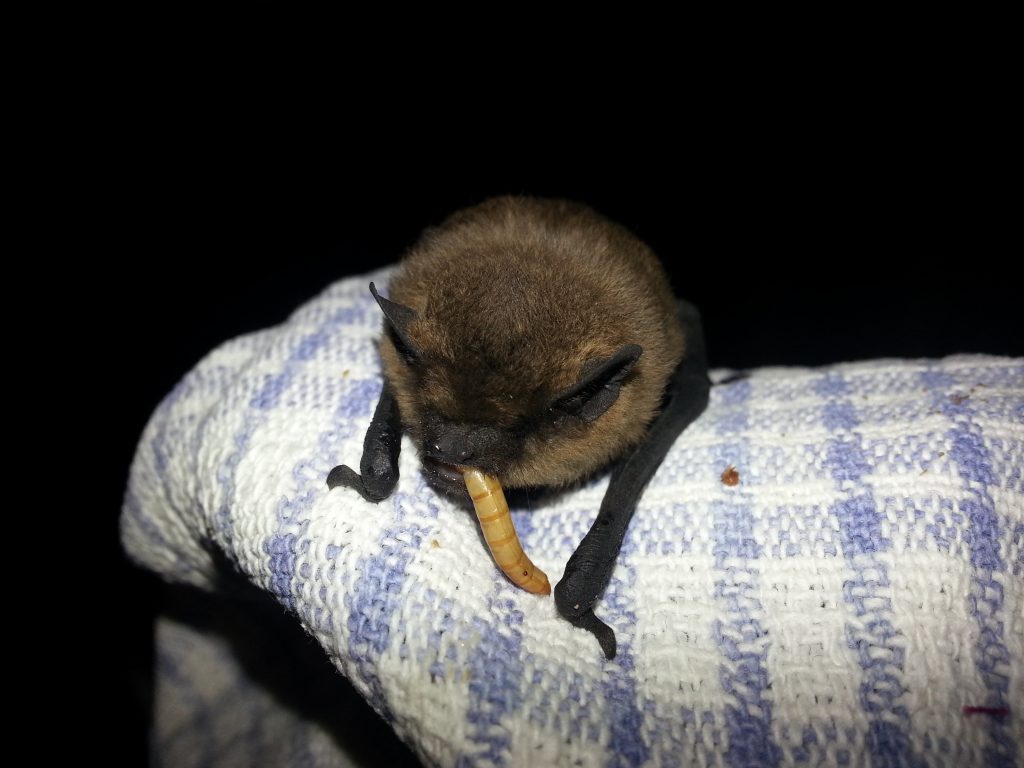If you have found an injured or non flying bat, you have come to the right page for help
First action is to call National Bat Helpline: 0345 1300 228 as soon as you can.
A trained adviser will then be able to help you, help the bat. If a bat worker needs to come out, the bat help line operator will get in touch with a bat carer in your area. Usually for Northumberland, an NBG member. We will get there as soon as we can but please be patient with us, we are all volunteers. Northumberland Bat Group has several volunteers trained in caring for bats and returning them to the wild
1.Try not to handle the bat at all, if you can.
Normally handling bats requires a licence (as they are a protected species) but the law is sensible, and makes provision for non-licensed people to handle an animal in distress. Quite rightly, it is better to save a bat from immanent danger, by picking it up, rather than to leave it to die! Bats are wild animals, not used to handling by humans. They can react unpredictably, either becoming docile, or aggressive, or somewhere in between; so if you can avoid picking them up they will appreciate it. If you do have to move a bat by picking it up, please: ALWAYS WEAR GLOVES.

2.Is the bat obviously injured?
If the bat is limping (one wing/arm or foot is dragging in comparison to the other) or there is damage to its body or holes in its wings this bat is likely to need trained help. The helpline may advise a volunteer will visit, or may ask if you can take the bat to a vet. Either way, the bat needs to be kept safe and comfortable until help arrives. If a vet is willing to treat a bat but not re-habilitate it, please call the Bat Helpline to arrange bat care.

3.Make sure the bat is not dehydrated.
Often in the summer, if the weather has been hot and dry, bats can become dehydrated, they lose water through the large surface area of their wings; causing them be be lethargic, and to land in the open. Bats can also become dehydrated if they are injured and have not been feeding properly. But dehydration is simple to solve. One option is to dip a cotton bud or a clean small paint brush, into clean water, then offer the droplet to the bat. With luck, a little pink tongue will start to lap the water up! Water can also be left for them to lap in a shallow container such as the plastic top of a milk bottle.

4.Keep your bat safe.
If appropriate, put a milk top of water by the bat and place an upturned cardboard box over the bat, weight the box on the outside to stop it blowing away.
If this is not practical, you will have to move the bat. Using gloves, place the bat in a shoebox lined with sheets of kitchen paper in a dark quiet place.
Please put water in for the bat, using a bottle top as a container, but remember to take it out again before moving the box (a cold, wet, injured bat is not going to be a happy one!).
Please always remember to put the lid on the box, after piercing small air holes in it, bats are amazing escapologists…even severely injured ones!
5.Try feeding the bat.
Finding suitable food is more of a problem, all bats are insectivores and some are quite picky about what they eat. In the wild a bat will not eat every night, if it is short of food it will conserve energy by going cold and very still. This looks a lot like it has died, but is a form of hibernation so don’t worry. Water is more important though, so if you have none, don’t worry. Try a non-fishy dog or cat food, the less smelly the better.
If you cannot feed it, make sure it has drunk some water and keep it safe, quiet, cool and dark until help comes.

Next steps…
If your bat appears to be uninjured, has taken water and is moving well, try to release it at dusk, where it was found, from a point over 1m high, away from cats. Unfortunately, cats are a bat’s no 1 predator. Bats can’t take off very well from the ground, a gliding start is better for them, so a higher starting point is better. It may well shiver to warm itself up before take-off.
Was it a cat attack?
Cats are sadly very fond of ‘playing’ with bats and responsible for a huge number of bat deaths each year.
If your cat is looking guilty, or hopefully before things get to that stage, please click here to download a copy of the leaflet ‘How to avoid a CATastrophe’.
